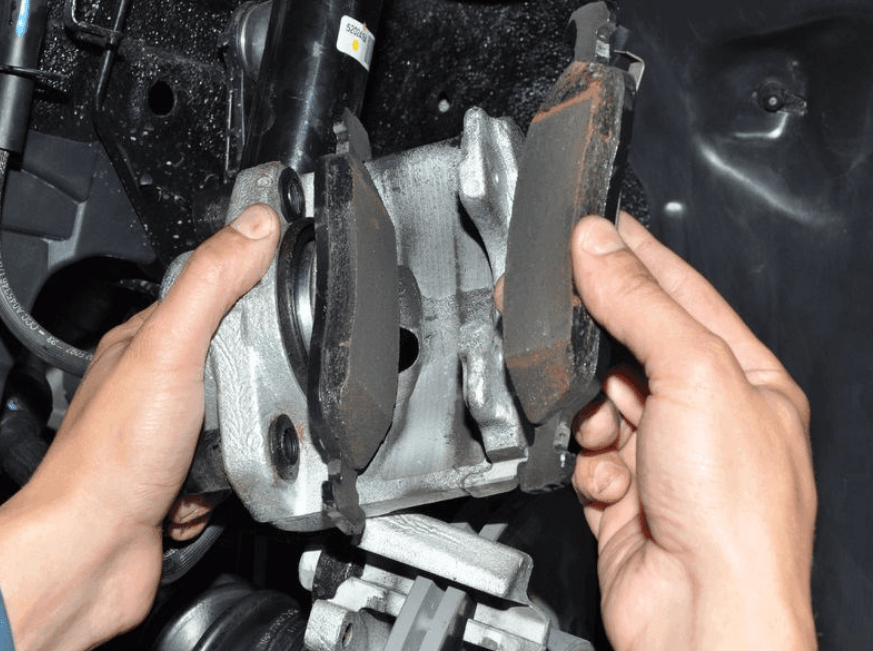The caliper is one part of the brake system. Its primary function is to press against the pads when the brake pedal is depressed, thereby providing braking.
Secondarily, it is responsible for holding the pads in an exceptionally parallel position when they are not engaged. It is the only moving part in the entire brake design. The effectiveness of the braking action depends to a large extent on the performance of the element.
A brake caliper is only present in a disc brake system. The drum type works on a different principle.
TYPES
The only way to classify calipers is the type of construction. According to this criterion, there are several varieties.
The first of them – fixed. Structurally, they are metal bodies in which several cylinders are symmetrically arranged. Each of them has pistons. Moving, they press both pads against the disc at the same time, which gives the braking effect. There may be more than one piston per cylinder (2, 4, 8, etc.), but such calipers are expensive and high-performance options.
The body itself is rigidly attached to the bracket of the machine (often to the knuckle of the rear or front suspension). The pistons are driven by brake fluid supplied through a system of hose and tubing. For simultaneous braking, the fluid is routed to each cylinder at once, which moves all the pistons. When at rest, the pads are held in place by special springs.
Fixed calipers are an earlier development. They are considered a proven in-demand solution, although more expensive. They are installed primarily on trucks and sports cars, but in general, are suitable for any car with a powerful engine and large dimensions.

The second type is calipers with floating brackets. The fundamental difference from the previous type is that in this case one of the pads stays permanently in the immovable position. Behind the second one, there is a hydraulic cylinder (one or two pistons), which moves the pad under fluid pressure and presses it against the surface of the disc. At the same time, a guide clamp assists in pressing down the second pad. The cylinder itself is in a metal housing.
The floating type is lighter than the fixed type and is much cheaper to manufacture. When working “warms” the brake fluid to lower temperatures (the difference is about 30-50℃). Most often found on inexpensive cars. Until now, this type of caliper has not acquired widespread use due to the fact that it is inferior to the fixed category in terms of braking efficiency. After all, due to the peculiarities of the principle of action, the pads are pressed with a delay, rather than simultaneously.
In addition, these parts have an “open” design, which is vulnerable to the detrimental effects of external factors. For example, the braking performance decreases if they come into contact with water.
The most commonly used caliper scheme of both types is two pads per wheel with a two-point attachment to the hub. The exact configuration may vary from vehicle to vehicle.
IS THERE A DIFFERENCE BETWEEN FRONT AND REAR CALIPERS?
Both units operate on the same principle but differ in their adaptation to the conditions of use: the nodes located on the rear axle are converted to work with the handbrake. Accordingly, due to the design features of the parts, it is not possible, for example, to install the front caliper instead of the rear and vice versa. Also, the rear ones are larger than the front ones and have a more complex design.

